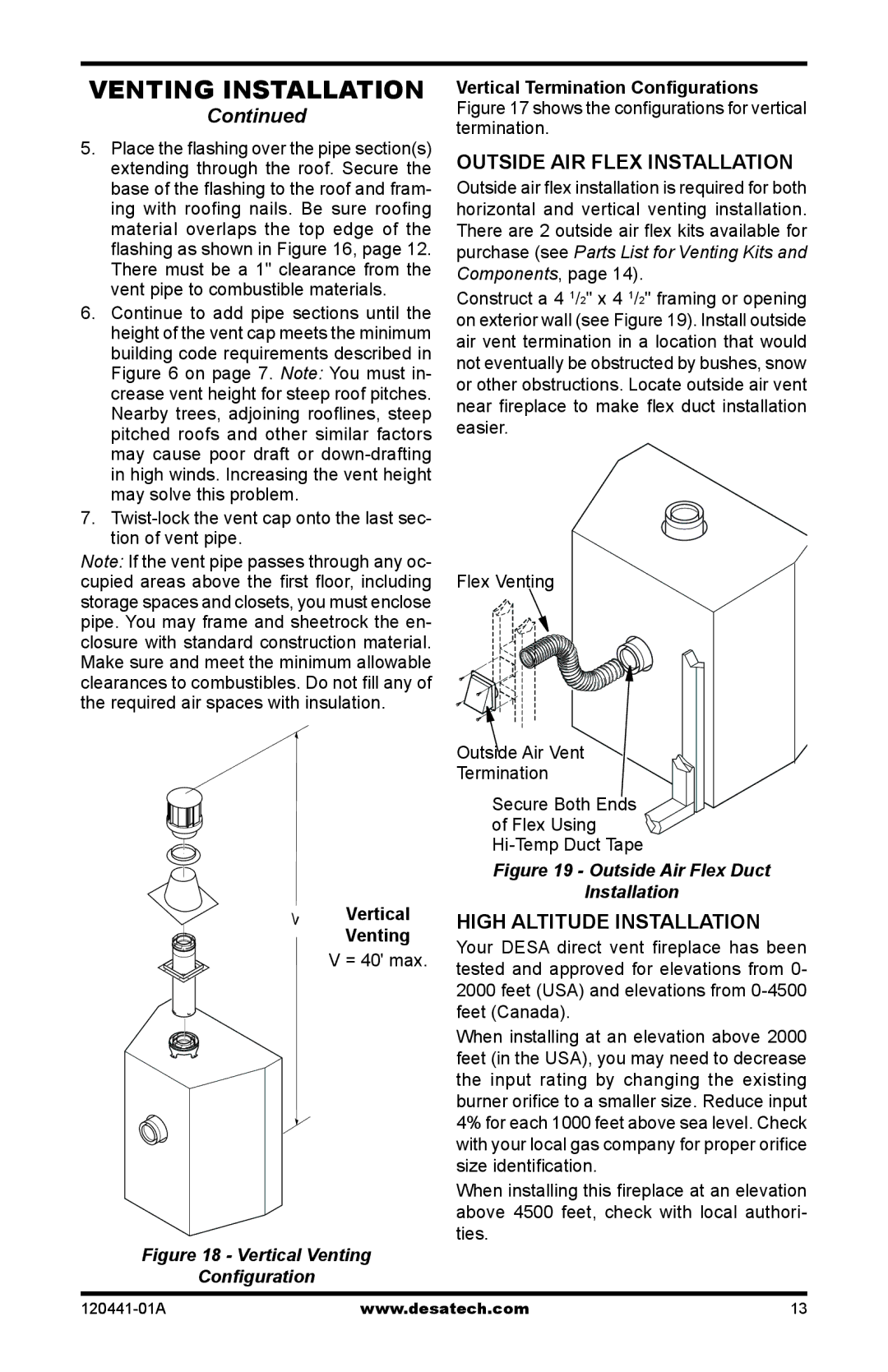
Venting Installation
Continued
5.Place the flashing over the pipe section(s) extending through the roof. Secure the base of the flashing to the roof and fram- ing with roofing nails. Be sure roofing material overlaps the top edge of the flashing as shown in Figure 16, page 12.
There must be a 1" clearance from the vent pipe to combustible materials.
6.Continue to add pipe sections until the height of the vent cap meets the minimum building code requirements described in
Figure 6 on page 7. Note: You must in- crease vent height for steep roof pitches.
Nearby trees, adjoining rooflines, steep pitched roofs and other similar factors may cause poor draft or
7.
Note: If the vent pipe passes through any oc- cupied areas above the first floor, including storage spaces and closets, you must enclose pipe. You may frame and sheetrock the en- closure with standard construction material. Make sure and meet the minimum allowable clearances to combustibles. Do not fill any of the required air spaces with insulation.
Vertical
Venting
V = 40' max.
Figure 18 - Vertical Venting
Configuration
Vertical Termination Configurations Figure 17 shows the configurations for vertical termination.
Outside Air Flex Installation
Outside air flex installation is required for both horizontal and vertical venting installation. There are 2 outside air flex kits available for
purchase (see Parts List for Venting Kits and Components, page 14).
Construct a 4 1/2" x 4 1/2" framing or opening
on exterior wall (see Figure 19). Install outside
air vent termination in a location that would not eventually be obstructed by bushes, snow or other obstructions. Locate outside air vent
near fireplace to make flex duct installation
easier.
Flex Venting
Outside Air Vent
Termination
Secure Both Ends
of Flex Using
Figure 19 - Outside Air Flex Duct
Installation
High Altitude Installation
Your DESA direct vent fireplace has been tested and approved for elevations from 0- 2000 feet (USA) and elevations from
When installing at an elevation above 2000 feet (in the USA), you may need to decrease the input rating by changing the existing burner orifice to a smaller size. Reduce input 4% for each 1000 feet above sea level. Check with your local gas company for proper orifice size identification.
When installing this fireplace at an elevation above 4500 feet, check with local authori- ties.
www.desatech.com | 13 |
